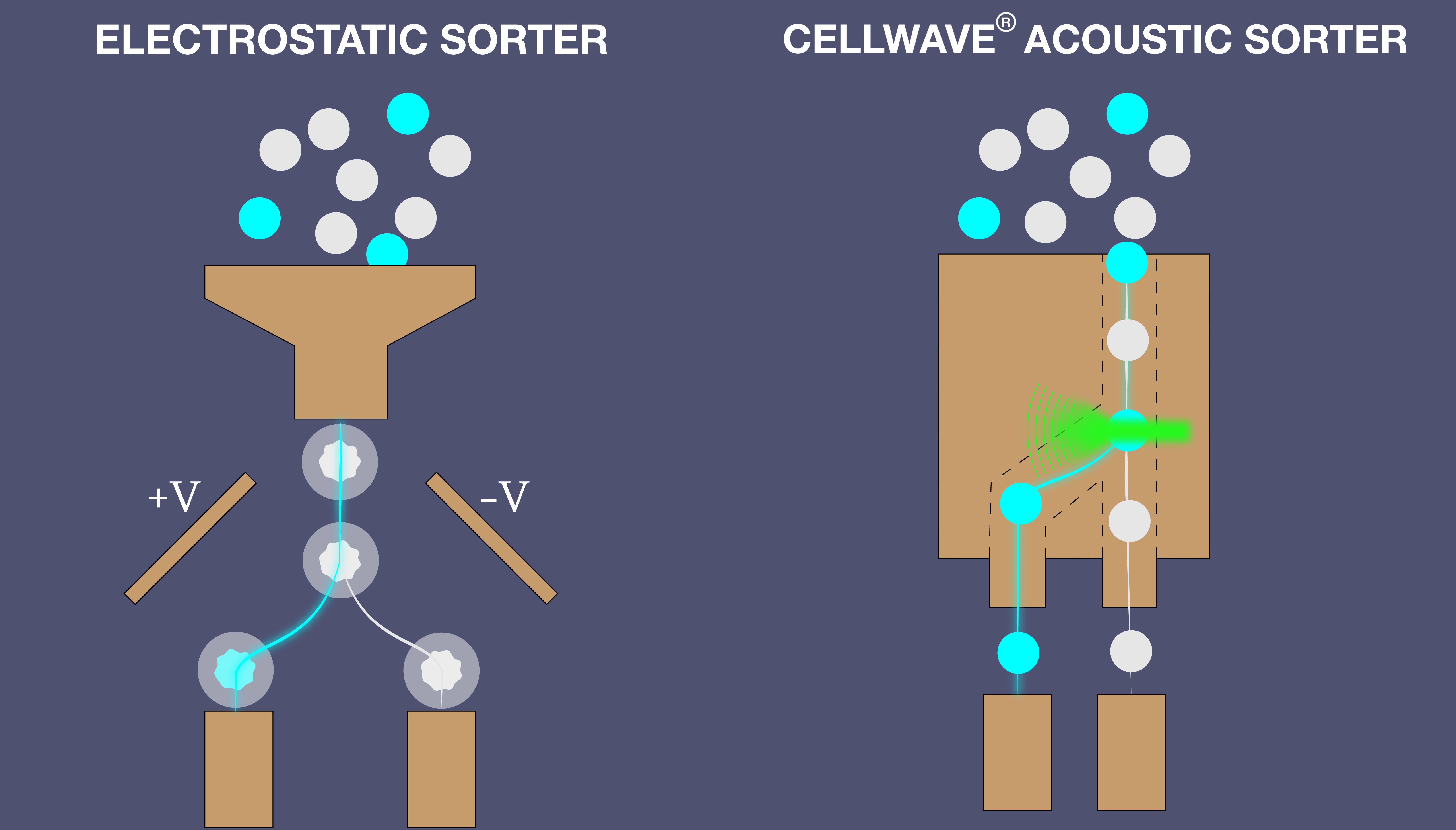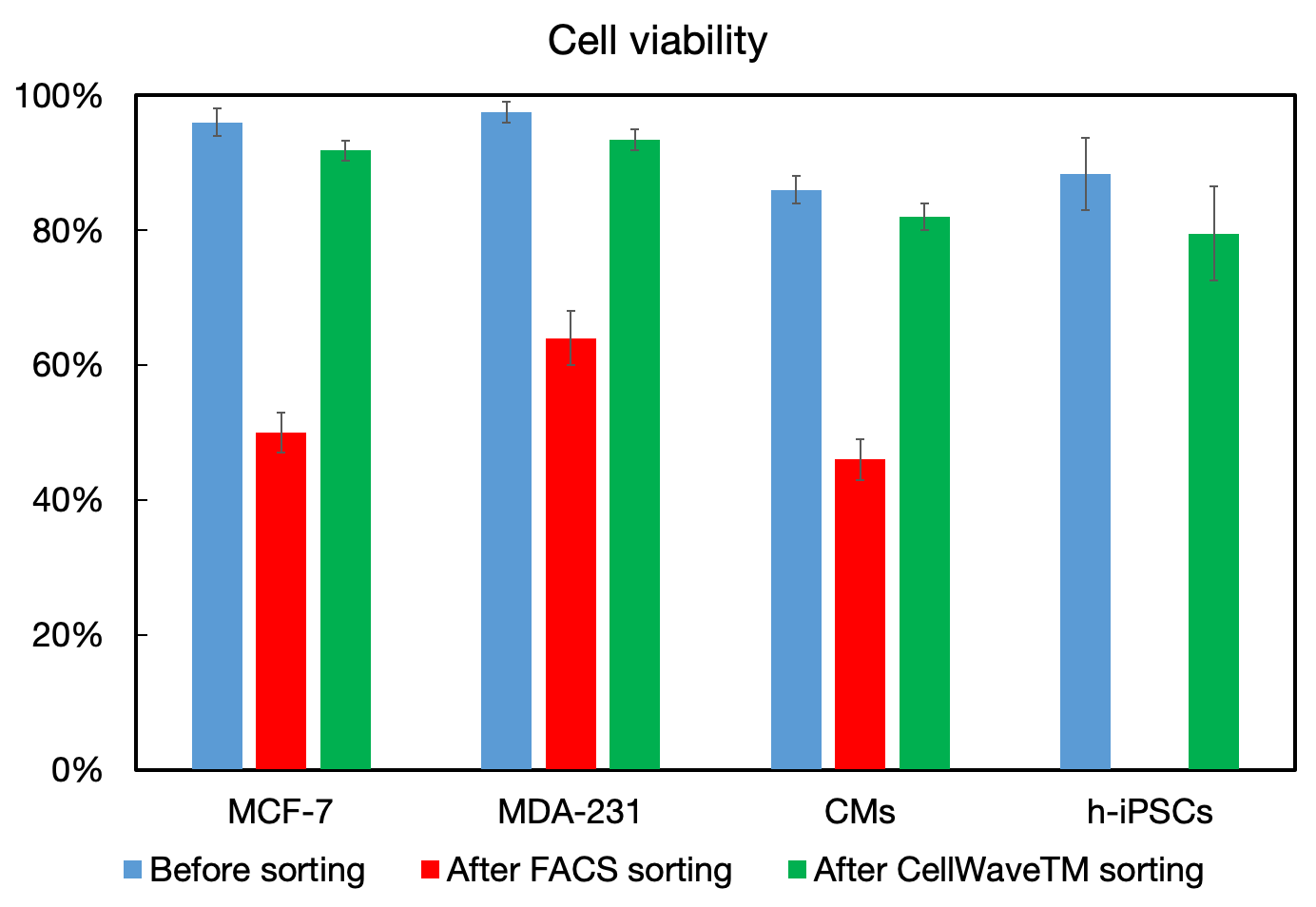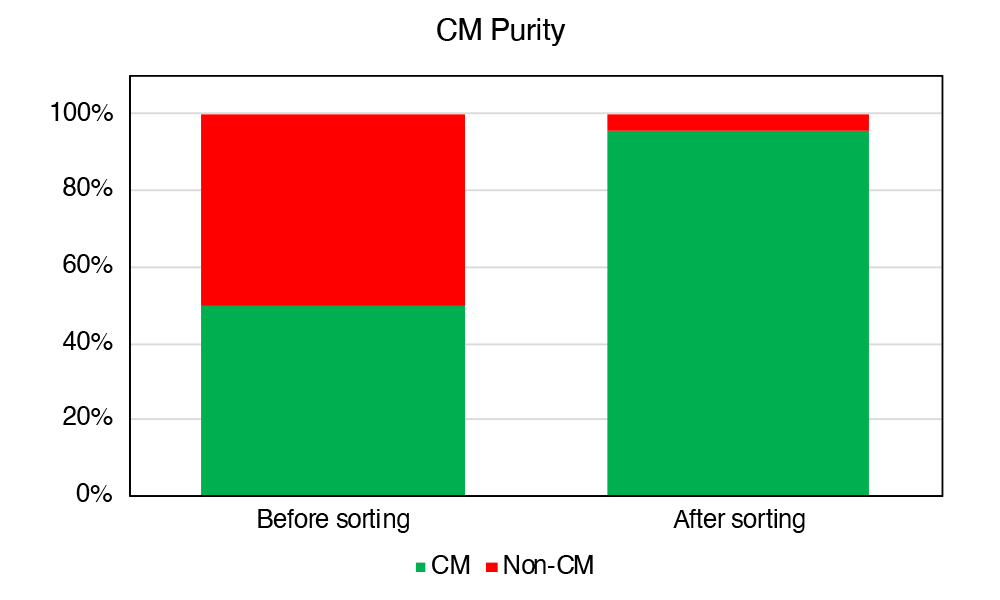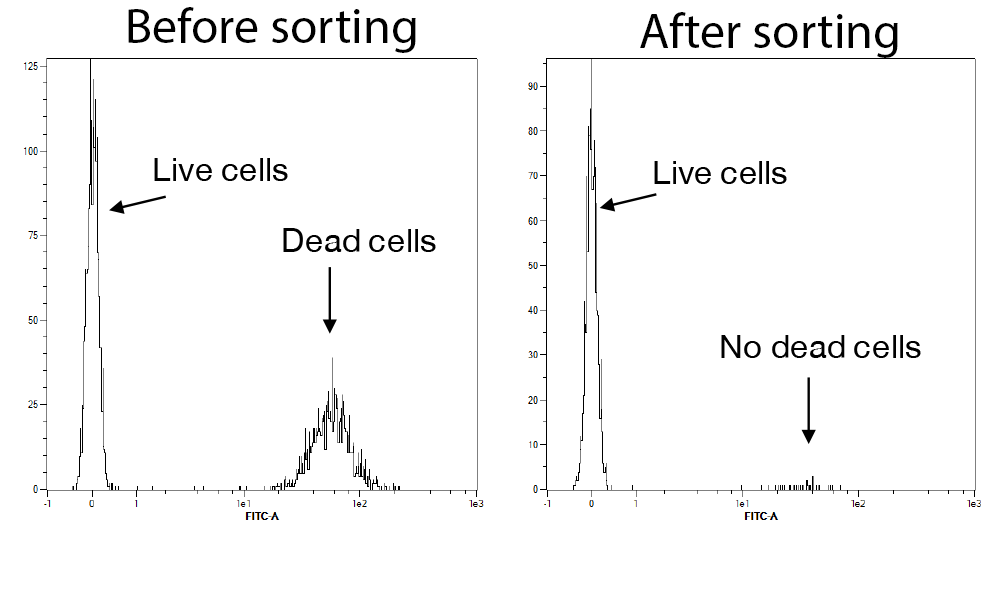Our unique approach to cell sorting
Conventional cell sorters feature 'drop in air' sorting, where cells are encapsulated inside a droplet that falls between electrically charged plates which deflect the droplet into the desired container. This process is highly stressful to cells and can kill many of the sorted cells.
We re-imagine fluorescence cell sorting using acoustic waves inside a microfluidic cartridge. An acoustic wave is focused to the size of a single cell to gently isolate target cells. CellWaveTM is a gentle alternative to drop in air cell sorters that ensures the viability of even the most fragile cell types.

Breakthroughs in stem cell research are happening at an exponential rate. We can now make heart cells in a dish, which can potentially be transplanted into heart attack patients to restore heart function, or be used as a platform to screen drugs for beneficial or harmful side effects.
It is very important that these heart cells are pure and viable. If there were a system capable of purifying heart cells and maintaining viability, it would be immensely beneficial for the scientific community.
Asst. Prof. Chrishan Ramachandra
Stem Cell Scientist
Single use sorting cartridge
CellWaveTM uses a disposable sorting cartridge in which cells are focused to the centre of a microfluidic channel using a sheath flow. Fluorescently labelled target cells are detected, which triggers a highly focused acoustic wave that gently pushes the target cell into a separate channel.
CellWaveTM in action
In this demonstration, MCF-7 cells are separated from whole blood using CellWaveTM. MCF-7 cells were fluorescently labelled and mixed with whole blood prior to sorting. Detection of the fluorescence signal triggers a sub-ms pulse of the highly focused acoustic wave to gently push the detected cell across the channel. Sorted MCF-7 cells flow to the top branch of the channel and the remaining whole blood flows to the lower branch.

Fluorescently labelled MCF-7 cells sorted from whole blood (into the top channel) with CellWaveTM
High viability cell sorting
Conventional drop in air sorters can kill as much as 50% of your precious sample. Not with CellWaveTM; our patented technology ensures over 95% post-sort cell viability.
Here we show that drop in air sorters (FACS) reduce cell viability by up to 50% for a range of cell types. With CellWaveTM this is only 3-4%, even with fragile cell types like cardiomyocytes (CMs).

High purity cell sorting
Conventional drop in air sorters have a trade-off between purity and recovery. CellWaveTM's highly focused acoustic wave can precisely isolate a single cell from a continuously flowing stream, ensuring high sample purity and recovery.
In this example, cardiomyocytes (CMs) are sorted from a heterogeneous sample, increasing purity from ~50% to 97%.

Dead cell removal
Dead cells present a significant challenge for single cell sequencing. Existing methods for dead cell removal also remove a significant number of live cells.
Dead cells can be removed using CellWaveTM by labelling the dead cells with a dead cell staining kit. Live cells flow through the sorting chip unperturbed, whilst the dead cells are actively removed. In this example, over 94% of dead MCF-7 cells were removed from a sample containing 41% dead cells, increasing the live cell fraction from 59% to 97%.
